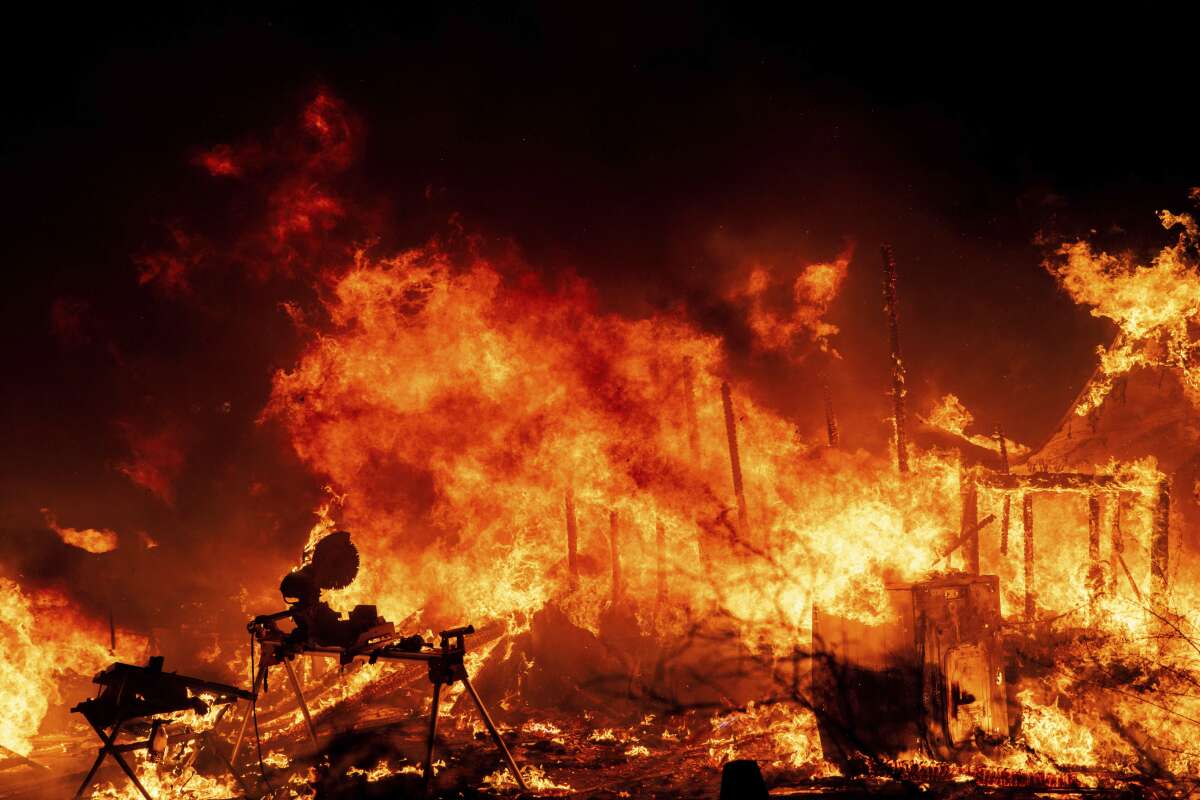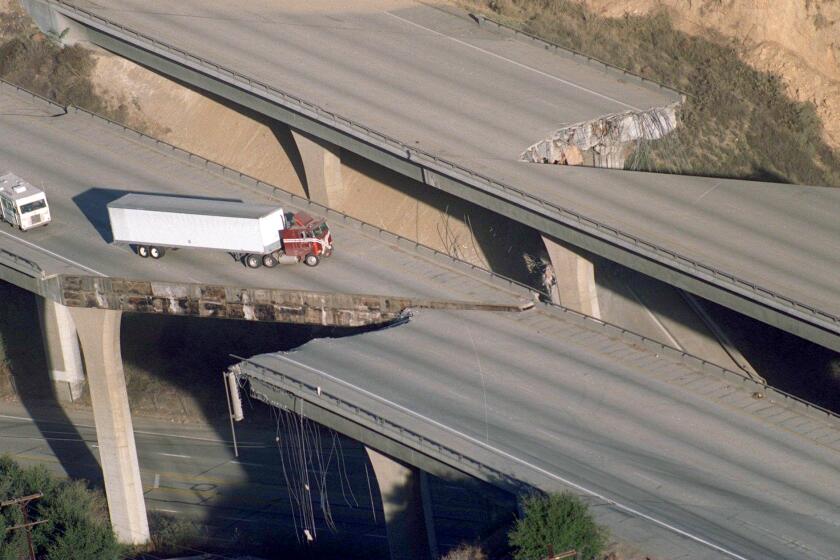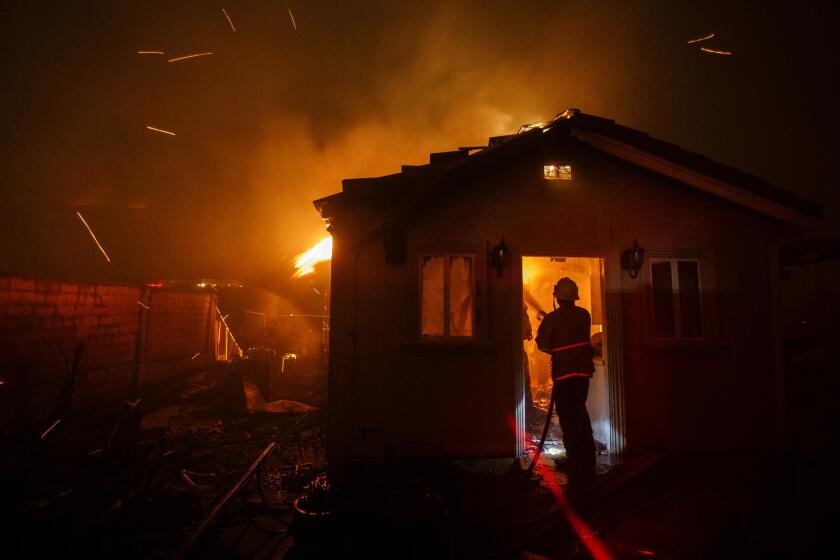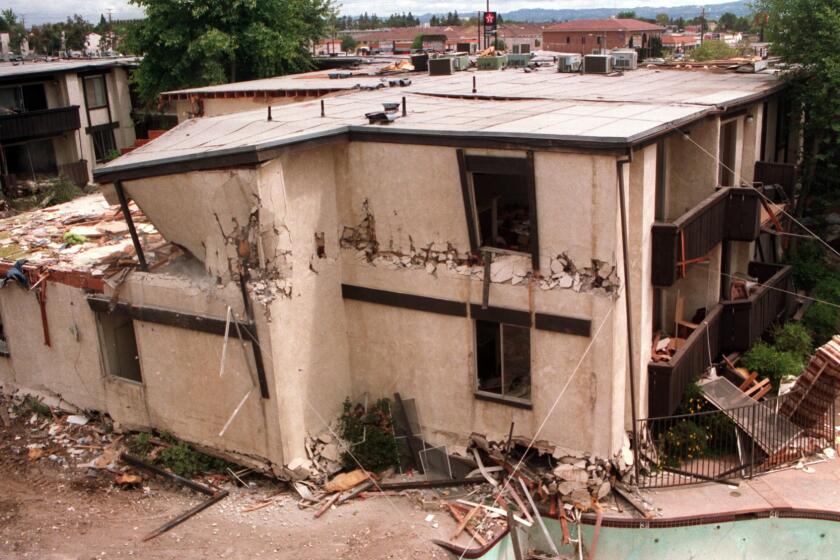Recovering from natural disasters is slow and bureaucratic. New FEMA rules aim to cut the red tape

- Share via
WASHINGTON — Anyone who has lived through a natural disaster and then applied to the federal government for assistance knows that it can be a lengthy, frustrating and bureaucratic process. New rules announced Friday by the federal agency in charge of emergency management aim to simplify and speed up the process.
With natural disasters now affecting more people across the United States, insurance markets in many states are buckling under the weight of payouts to those hit by wildfires and hurricanes.
Deanne Criswell, who heads the Federal Emergency Management Agency, said the changes are designed to make it easier for disaster survivors to get help — a challenge for those often struggling to recover from the worst day of their lives.
“Mother Nature is not letting up,” Criswell said to reporters on a call announcing the changes. “We need to be better prepared and better informed to recover from natural disasters faster and more effectively.”
Criswell described the changes as the “most comprehensive update to our individual assistance program in 20 years.” She said the changes were the result of a huge amount of feedback from survivors, organizations that work in disaster recovery and elected officials.
Our understanding and preparedness have come a long way since Northridge’s magnitude 6.7 earthquake in 1994. We’re still learning from that destructive temblor.
Here are some of the changes outlined by FEMA:
Help for homeowners without enough insurance
Under previous rules, homeowners who had received payments from their insurance company for home repairs but not enough to cover all of the damage were essentially out of luck when it came to getting help from FEMA. Now those homeowners can apply to FEMA for help.
Criswell gave an example of a homeowner who has $80,000 in damage but receives only $45,000 from the insurance company. Previously, FEMA couldn’t help them because their insurance payout already exceeded the agency’s assistance cap of $42,500 per disaster.
Now, that same homeowner can get money from the agency to make up the difference. This rule change comes at a time when homeowners in places like California, Louisiana and Florida are facing skyrocketing deductibles and fights with insurance companies over damage assessments that have made it difficult even for people with insurance to recover from hurricanes or wildfires.
Insurers agreed to return to the high-risk fire zones in the hills and canyons of California in exchange for concessions that will make it easier for them to get rate increases approved.
Getting rid of the loan rule
Under previous rules, disaster survivors first had to apply for a loan with the Small Business Administration and get rejected before they could apply for FEMA assistance. Criswell said survivors found the SBA application requirement “confusing and challenging,” so the agency is eliminating that requirement.
Changes to critical needs assistance
The agency has had something called critical needs assistance, currently $750, that survivors can use for whatever they need right after a disaster: baby formula or food, for example. But states or tribal nations had to specifically request that category of assistance, and it was only done on a case-by-case basis.
Now, any time a disaster is declared that includes FEMA’s individual assistance funding stream, those $750 payments will be available.
Survivors still have to apply, and there is some vetting to prevent fraud. But it bypasses the application that states and tribal nations had to make.
That doesn’t mean that every disaster will include these payments. Many declared disasters are more limited in scope.
I was out of town when the quake hit Southern California. A bus driver risked his job to get me and my fellow Cal State Northridge students home.
Other changes outlined by FEMA
Disaster survivors with disabilities can use FEMA money to make changes to their homes to make them more accessible, whereas under previous rules the agency would pay only to rebuild things that had been damaged in the disaster. People with preexisting problems in their home, such as a leaky roof, can now get money from the agency to fix the house. Currently, the agency requires that if it is giving people money to fix something, it had to have worked before the disaster.
And FEMA is creating a new category of aid called displacement assistance, designed to help those who can’t return to their home. It gives them money for housing while they’re looking for a long-term rental and has flexibility so that they can, for example, use the money to pay a friend’s utilities if they’re crashing on a couch.
The new rules go into effect March 22. The changes are expected to cost $671 million a year, with $159 million of that borne by the states and tribal nations where the disasters occur.
More to Read
Sign up for Essential California
The most important California stories and recommendations in your inbox every morning.
You may occasionally receive promotional content from the Los Angeles Times.













